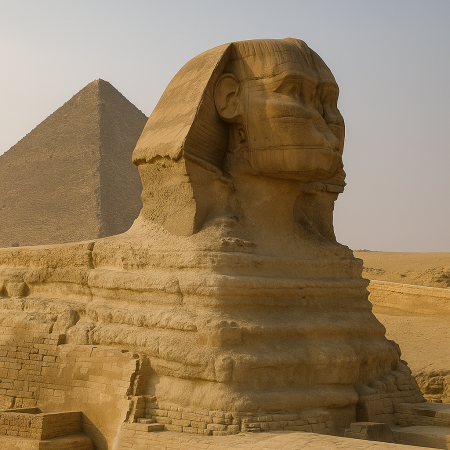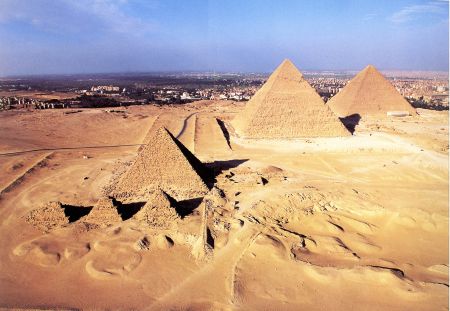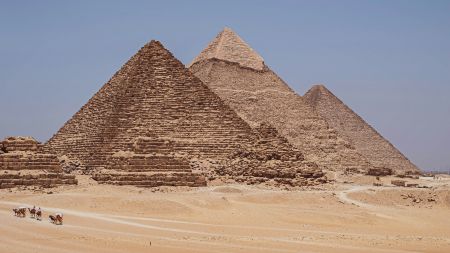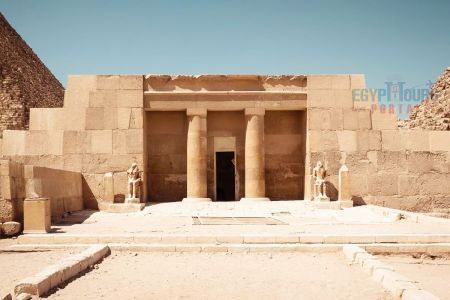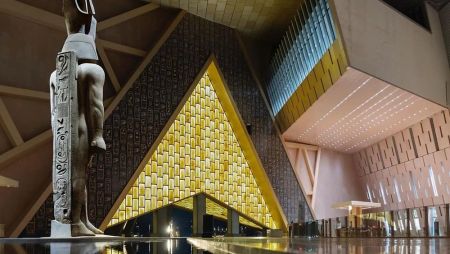Sakkara Necropolis : The Eternal Gateway

Sakkara Necropolis, often spelled Saqqara, is Egypt’s largest and most enduring burial ground, serving as a sacred cemetery for over 3,000 years. Located roughly 30 kilometers south of Cairo on the west bank of the Nile, this sprawling complex is far more than a graveyard—it’s a vibrant testament to Egypt’s spiritual beliefs, royal legacy, and architectural genius. Home to the world’s first stone pyramid—the Step Pyramid of Djoser—Sakkara bridges the early dynastic eras with the grandeur of the Old Kingdom and beyond.
Unlike Giza, which is more rigidly tied to a specific time and dynasty, Sakkara reveals a continuous evolution of burial practices, religious shifts, and artistic innovation. Kings, nobles, priests, and commoners alike found their final resting place here. This site holds not only pyramids but also mastabas, temples, galleries, and underground tombs—each layer of limestone revealing deeper secrets about the lives and deaths of ancient Egyptians.
As part of the larger Memphis Necropolis, Sakkara has been designated a UNESCO World Heritage Site and remains a critical key to understanding early Egyptian civilization. From the monumental architecture of Pharaoh Djoser to the richly decorated tombs of high officials, Sakkara offers an unmatched experience for history lovers, Egyptologists, and adventurers alike.
Historical Significance of Sakkara Necropolis
Sakkara as the Royal Burial Ground of Memphis
Memphis, once the capital of ancient Egypt, relied on Sakkara as its main necropolis. Nearly every dynasty from the First to the Roman Period left its mark on this site. The location was carefully chosen based on spiritual alignment—on the west bank of the Nile where the sun sets, symbolizing death and the journey to the afterlife.
Early Dynastic Tombs and Mastabas
Before pyramids, the elite were buried in mastabas—rectangular flat-roofed structures built from mudbrick and stone. These tombs at Sakkara are among the oldest in Egypt, providing insight into pre-pyramid burial rituals. Many include elaborate wall reliefs, false doors, and offering scenes to nourish the deceased’s spirit.
Evolution of Pyramid Construction Begins at Sakkara
The step pyramid of Djoser, designed by the brilliant architect Imhotep, revolutionized funerary architecture. It marked the transition from mudbrick to stone and laid the foundation for future pyramids. This six-tiered structure was the first large-scale cut-stone construction in human history and remains one of the most iconic landmarks of Sakkara.
Treat yourself to the finest journey with the 8 Days Egypt Luxury Tour
The Step Pyramid of Djoser – Sakkara’s Crown Jewel
Architectural Innovation by Imhotep
Constructed during the Third Dynasty under Pharaoh Djoser (circa 2670 BCE), the Step Pyramid was conceived by Imhotep—Egypt’s first known architect, physician, and later deified figure. It began as a traditional mastaba but evolved into a six-tiered pyramid, showcasing unprecedented engineering.
Enclosure Walls and Courtyards
Surrounding the pyramid is a vast limestone enclosure wall nearly 10 meters high with 14 false doors, symbolizing Djoser’s power over both the living and the spiritual realms. Inside, ceremonial courtyards, shrines, and colonnades formed a setting for the Heb-Sed festival, which celebrated royal rejuvenation.
Burial Chambers and Subterranean Complex
Beneath the pyramid lies a network of shafts, tunnels, and chambers lined with blue faience tiles, designed to mimic the palace of the living king. These underground corridors are among the most complex in ancient Egypt and intended to serve the pharaoh for eternity.
Other Notable Pyramids and Tombs in Sakkara
The Pyramid of Unas – The First Pyramid Texts
The Pyramid of Unas, last king of the Fifth Dynasty, is celebrated for containing the oldest religious texts inscribed on its inner walls—the Pyramid Texts. These sacred spells, hymns, and rituals aimed to protect and guide the king in the afterlife. This innovation would shape future religious literature and pyramid architecture.
Teti’s Pyramid and Nearby Tombs
Teti, the first king of the Sixth Dynasty, was buried in Sakkara in a pyramid whose core has mostly collapsed, but whose burial chamber still bears Pyramid Texts. Adjacent to his pyramid lie mastabas of top officials such as Mereruka and Kagemni—lavishly decorated tombs showcasing daily life, rituals, and court scenes.
Serapeum of Sakkara – Tombs of the Apis Bulls
One of Sakkara’s most mysterious structures is the Serapeum—a vast underground gallery where sacred Apis bulls were mummified and entombed in massive granite sarcophagi. The bulls, believed to be earthly manifestations of the god Ptah, were honored with elaborate burial rites similar to those of royalty.
Art and Inscriptions at Sakkara
Wall Reliefs and Colorful Scenes of Daily Life
Sakkara’s tombs are among the best-preserved sources of ancient Egyptian art. Vibrant carvings and paintings depict fishing, farming, feasting, and religious rituals—offering a rare glimpse into everyday life and the beliefs of the elite.
Funerary Texts and Spiritual Protection
From Pyramid Texts to Coffin Texts and eventually Book of the Dead passages, Sakkara’s walls are rich with sacred incantations. These were not just decorative—they were essential tools to ensure safe passage through the underworld.
Symbolism in Tomb Decoration
Each artistic element—whether lotus flower, ankh, or falcon—carried deep symbolic meaning. Tombs were carefully curated to reflect the deceased’s status, piety, and relationship with the gods.
Modern Discoveries and Archaeological Work at Sakkara
21st Century Excavations Unveil New Secrets
Recent excavations have made Sakkara one of Egypt’s most active archaeological sites. In 2020 and 2021, dozens of sealed wooden coffins from the Late Period were discovered intact, complete with vibrant colors, mummies, amulets, and religious texts—offering an unprecedented look into ancient burial customs.
Importance to Egyptology and Global History
Sakkara remains crucial for understanding Egypt's dynastic chronology, religious evolution, and sociopolitical development. Each discovery rewrites parts of history and attracts global attention from media, scholars, and travelers.
Museums and Global Exhibits
Many artifacts from Sakkara are displayed in the Egyptian Museum in Cairo and international institutions. Traveling exhibitions often feature items from the necropolis, highlighting its global cultural significance.
Visitor Guide to Sakkara Necropolis
How to Get There
Sakkara is easily accessible from Cairo via private car, taxi, or organized tours. It’s often combined with visits to Dahshur and Memphis for a full Lower Egypt experience.
What to Expect on Site
The site is vast, so comfortable footwear is essential. Visitors can explore the Step Pyramid complex, several mastabas, tombs with colorful reliefs, and the Serapeum. A local guide is highly recommended for deeper insight into the site’s intricate history.
H5: Best Time to Visit
The cooler months between October and April offer the most pleasant climate for exploring this open-air archaeological treasure.
Frequently Asked Questions about Sakkara Necropolis
What makes Sakkara different from Giza?
While Giza is known for its massive pyramids from a single dynasty, Sakkara served as a burial site for over 3,000 years across multiple dynasties, showcasing an evolution in architecture and burial practices.
Can I go inside the Step Pyramid of Djoser?
Yes, the Step Pyramid reopened to the public in 2020 after extensive restoration. Visitors can now enter certain chambers, offering a rare view of this ancient engineering marvel.
What are the Pyramid Texts and why are they important?
The Pyramid Texts are the earliest known religious inscriptions in Egypt, first found in the Pyramid of Unas. They laid the foundation for all later funerary literature in ancient Egypt.
Is Sakkara still an active excavation site?
Absolutely. New tombs, coffins, and mummies are frequently unearthed at Sakkara, making it a living laboratory for Egyptologists.
How long should I spend at Sakkara Necropolis?
A half-day visit is sufficient to see the major sites, but history buffs may want to dedicate a full day to explore it thoroughly.
Conclusion: Sakkara Necropolis – Timeless Portal into Egypt’s Ancient Soul
Sakkara Necropolis isn’t just a destination—it’s a portal into the very soul of ancient Egypt. From the birth of pyramid construction to the beautifully carved tombs of nobles and sacred bulls, it offers a layered, immersive journey through the ages. As new discoveries emerge, Sakkara continues to reshape what we know about the ancient world, offering fresh insights into life, death, and the divine legacy of the pharaohs.


